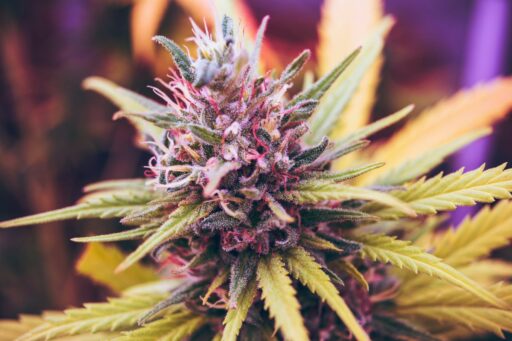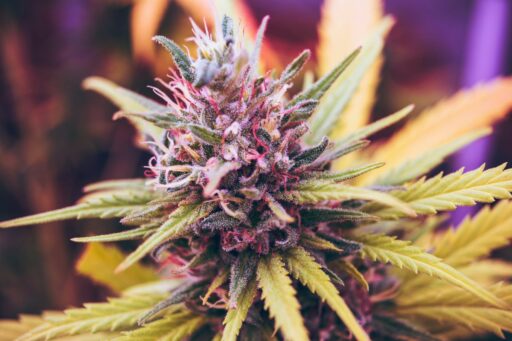On the historic date marking Canada’s legalization of cannabis, we reflect on the nation’s transformative journey towards embracing cannabis freedom. From pivotal legislation to shifting consumption patterns and the balancing act between workplace safety and privacy, this article delves into the multifaceted impacts of legalization. We also explore the social and health implications, offering a comprehensive view of how cannabis has integrated into Canadian society.
Key Takeaways
- The Cannabis Act of 2018 was a significant milestone that led to the inclusion of a wider range of products like edibles, extracts, and topicals in 2019, reflecting evolving consumer preferences.
- Statistics Canada’s 2023 National Cannabis Survey revealed that edibles are becoming more popular than dried flower, especially amongst women over the age of 25.
- Although drug testing is legal in Canada, it is not regulated, presenting challenges for employers in transportation and other industries to ensure safety without infringing on privacy.
- Legalization has resulted in positive outcomes such as increased purchases from legal sources, reduced cannabis-related offences, and stable youth consumption rates.
- Despite Health Canada’s recommendations on standard dosing for cannabis, there has been no government action on mandatory labelling, akin to standard alcohol drink labelling.
The Evolution of Cannabis Legislation in Canada

The Cannabis Act of 2018: A Milestone for Legalization
The enactment of the Cannabis Act in 2018 marked a transformative shift in Canada’s approach to cannabis. Canada’s approach to cannabis shifted from prohibiting and criminalizing activities with cannabis to one grounded in regulated and controlled access to minimize harm and ensure public safety. This legislative change was not merely a reform but a fundamental reorientation of the legal framework surrounding cannabis.
The Cannabis Act established a strict legal framework for controlling the production, distribution, sale, and possession of cannabis across Canada.
The Act aimed to accomplish several key objectives:
- Protecting public health and safety by setting strict product safety and quality regulations
- Deterring criminal activity by imposing serious criminal penalties for those operating outside the legal framework
- Providing for the legal production of cannabis to reduce illegal activities
- Allowing adults to access legal cannabis
The implementation of the Act has been a complex process, involving coordination between federal, provincial, and territorial governments. It has set the stage for ongoing discussions about taxation, pricing, and the expansion of the cannabis market to include new product categories.
Expanding the Market: The Inclusion of Edibles, Extracts, and Topicals
Following the initial legalization of certain cannabis products, the Canadian market witnessed a significant expansion. A year after the Cannabis Act came into force, the legislation was broadened to encompass cannabis extracts, edibles, and topicals. This diversification has catered to a wider range of consumer preferences and has been instrumental in shaping the current cannabis landscape in Canada.
Consumer trends have shifted noticeably since this expansion. The inclusion of these new product categories has not only provided more options but also influenced consumption patterns:
- Dried leaf or flower remains popular, with 62.1% usage.
- Edibles have seen a substantial rise, with 57.1% of consumers partaking.
The market’s evolution reflects a growing sophistication in both product offerings and consumer tastes. The ability to choose from a variety of consumption methods has been a key factor in the ongoing normalization of cannabis use in society.
The Ongoing Debate: Taxation and Pricing Challenges for Producers
The legalization of cannabis in Canada has brought about a new set of challenges for producers, particularly in the realm of taxation and pricing. The introduction of carbon pricing has been a contentious issue, with many arguing that it disproportionately affects the agricultural sector, including cannabis producers. The carbon tax, which is set to increase by 23% as of April 1, has escalated fears among farmers and producers who are already grappling with high costs for fuel, fertilizer, and other necessities.
The impact of taxation on the cannabis industry extends beyond carbon pricing, affecting the overall competitiveness and financial viability of producers.
Producers are also facing difficulties in navigating the complex tax landscape that comes with the legal cannabis market. This includes excise taxes, sales taxes, and additional regulatory fees that can vary by province and territory. The following table outlines some of the key tax considerations for cannabis producers in Canada:
| Tax Type | Description |
|---|---|
| Excise Tax | Levied on cannabis products at the federal level and varies by product type. |
| Sales Tax | Provincial sales taxes or harmonized sales tax (HST) apply to cannabis products. |
| Regulatory Fees | Additional fees for licensing, compliance, and other regulatory requirements. |
As the industry continues to evolve, producers and policymakers alike are seeking ways to balance the need for tax revenue with the sustainability of the cannabis market.
Understanding Canadian Cannabis Consumption Patterns

StatCan’s Insightful Findings on User Preferences
Statistics Canada’s recent surveys have painted a detailed picture of cannabis consumption trends in the country. The 2023 National Cannabis Survey highlighted a shift in user preferences, with a notable inclination towards edibles, especially among women over the age of 25. This preference aligns with the broader trend of moving away from smoking dried flower.
The survey also underscored the diversity in product potency and the varying onset times of effects based on the method of consumption. Here’s a succinct breakdown of preferences by age group:
| Age Group | Preferred Product |
|---|---|
| 18-44 | Mixed Preferences |
| 45+ | Edibles |
The findings suggest a maturing market where consumers are becoming more discerning in their choices, seeking products that align with their lifestyle and consumption habits.
StatCan’s insights also serve as a reminder of the potential risks associated with frequent cannabis use. A cited study indicates that daily consumers may struggle with controlling their usage, pointing to a risk of developing cannabis use disorder.
The Rise of Edibles and Decline of Dried Flower Among Consumers
In the years following legalization, a distinct shift in consumer preferences has emerged. Edibles have gained popularity, particularly among women over the age of 25, while traditional dried flower consumption has seen a relative decline. This trend reflects a broader diversification of cannabis products in the market.
The preference for edibles over dried flower is not just a matter of taste but also indicates a shift towards discretion and convenience in cannabis consumption.
The following table illustrates the preferences among different age groups:
| Age Group | Dried Flower | Edibles | Vape Pens | Extracts & Concentrates |
|---|---|---|---|---|
| 18-24 | High | High | Very High | High |
| 25+ | Moderate | High | Moderate | Low |
Men, particularly those 25 and older, have maintained a stronger preference for dried flower compared to women, who have shown a higher inclination towards edibles. This gender-based divergence in product choice is less pronounced among younger adults.
Demographic Trends: Age and Gender Differences in Cannabis Use
The landscape of cannabis consumption in Canada reveals distinct preferences across different age groups and between genders. For consumers aged 25 and older, a gender divide is evident, with men favoring dried leaf or flower products (70.2%) and women showing a higher inclination towards edibles (62.7%). This contrast is less pronounced among adults aged 18 to 24.
Younger cannabis consumers display a varied preference for products, including vape pens, extracts, and beverages, while older demographics lean towards topicals and oral oils.
The frequency of use also varies demographically, with 8.7% of adults aged 18 to 24 and 10.3% of those 25 to 44 reporting daily or near-daily use, compared to just 4.8% of adults 45 and older. In the older age bracket, men are more likely to be frequent users.
| Age Group | Daily/Near-Daily Use | Men Preferring Dried Flower | Women Preferring Edibles |
|---|---|---|---|
| 18-24 | 8.7% | N/A | N/A |
| 25-44 | 10.3% | 70.2% | 62.7% |
| 45+ | 4.8% | More likely (Men) | Less likely (Women) |
Navigating Drug Testing and Employment in Post-Legalization Canada

The Legal Landscape of Workplace Drug Testing
In the wake of cannabis legalization, Canadian employers face a complex challenge in maintaining drug testing policies that respect both safety and privacy. Drug testing is legal but not regulated in Canada, creating a delicate balance between workplace safety and potential human rights or privacy infringements.
- Employers must navigate the unregulated landscape with caution.
- Policies must be clear, consistent, and respectful of privacy rights.
- Safety-sensitive positions may require more stringent testing protocols.
Employers are tasked with the responsibility of creating a safe work environment while simultaneously upholding the rights and dignity of their employees.
The transportation industry, particularly cross-border trucking, is under increased scrutiny due to the implications of drug testing on international travel and trade. The lack of standardized regulations across borders further complicates the establishment of coherent policies.
Balancing Safety and Privacy: Employers’ Dilemma
In the wake of cannabis legalization, Canadian employers face a complex challenge in balancing workplace safety with employee privacy rights. Most companies in Ontario and British Columbia opt not to test for drugs, adhering to human rights legislation and privacy concerns. Policies must be clear and respect individual rights while ensuring a safe work environment.
Employers are advised to exercise caution when considering drug testing policies. The legal landscape is not fully regulated, which means there’s a fine line between allowable testing and potential violations of human rights and employee privacy. Here are some key considerations for employers:
- Establishing a clear policy on drug testing and impairment at work.
- Understanding the legal implications of drug testing, including human rights and privacy issues.
- Implementing a fair process for dealing with positive test results and ensuring proper documentation.
Employers must navigate these issues carefully to maintain trust and uphold the rights of their workforce, while also addressing safety and security concerns.
Implications for the Transportation Industry and Cross-Border Trucking
The legalization of cannabis in Canada has introduced new complexities for the transportation industry, particularly for cross-border trucking operations. The intersection of differing legal frameworks between Canada and the United States poses unique challenges for motor carrier employees.
- Canadian truckers must navigate a patchwork of regulations that vary by province and territory, as well as federal laws.
- In the U.S., despite some states legalizing cannabis, it remains illegal at the federal level, affecting those who cross the border.
- Trucking companies are implementing rigorous drug and alcohol testing policies to ensure compliance and safety.
The need for clear guidelines and consistent policies is critical to maintain the flow of goods without compromising legal obligations or road safety.
Bipartisan legislation has been proposed to address some of the practical concerns, such as ensuring truckers have access to restrooms during deliveries. This move underscores the importance of considering the welfare of drivers as part of the broader regulatory conversation.
The Social and Health Impacts of Legalized Cannabis

Shifts in Legal Sources and Decline in Cannabis-Related Offences
Since the legalization of cannabis, Canada has witnessed a significant shift towards the procurement of cannabis from legal sources. The number of cannabis-related offences has notably decreased, reflecting the change in legal status and public perception. The National Cannabis Survey highlights this transition, with a marked increase in the share of cannabis obtained legally from 2018 to 2023.
The agency’s findings suggest that the legalization has led to positive outcomes, including a stable rate of cannabis use among youth and a decline in criminal offences related to cannabis possession.
Reasons for choosing legal cannabis sources, as reported by consumers, include:
- Product safety (38%)
- Convenience (16.9%)
- Compliance with the law (12.9%)
The data underscores the importance of safety and legality in influencing consumer behavior, which has been instrumental in the shift towards legal cannabis markets.
Youth Consumption Rates: Addressing Public Concerns
The increasing potency of cannabis products has raised alarms among health experts, particularly regarding the impact on the developing brains of adolescents. The call for ‘total THC’ labels and standard dosing is a direct response to these concerns.
A recent panel of experts, after reviewing the effects of the 2018 legalization, proposed a series of recommendations aimed at protecting youth. Among these was the introduction of a standard dose to be indicated on cannabis products, which would guide users, especially younger ones, in making safer consumption choices.
The panel’s emphasis on education highlights the need for comprehensive drug education that goes beyond mere labeling. It’s crucial for both the general public and youth to understand the different effects of cannabis consumption methods.
The support from individuals who have experienced cannabis-induced psychosis for the panel’s recommendations underscores the urgency of implementing measures to safeguard young consumers. The table below summarizes the key recommendations from the panel:
| Recommendation | Description |
|---|---|
| Increase excise tax | On high-potency cannabis products |
| Revise packaging | Introduce clearer labeling rules |
| Standard dose definition | Help users understand a single serving |
| Enhance drug education | For public and youth specifically |
Health Canada’s Recommendations on Standard Dosing
In response to concerns about safe consumption, Health Canada has been urged to establish a standard dose for cannabis. This recommendation parallels the concept of a ‘standard drink’ for alcohol, aiming to guide users towards more informed and responsible use. The push for a standard dose is supported by individuals who have experienced adverse effects, such as cannabis-induced psychosis, underscoring the need for clear consumption guidelines.
Establishing a standard dose is seen as a critical step in helping consumers make safer choices. It acknowledges that THC affects individuals differently, and starting with the lowest possible dose is advisable.
While the recommendations have been made, implementation in terms of mandatory labeling has yet to be seen. The Canadian Centre on Substance Use and Addiction’s call for alcohol container labels to indicate the number of standard drinks has not been acted upon, suggesting a similar path for cannabis dosing guidelines may face delays.
Conclusion
As Canada marks the anniversary of cannabis legalization, the journey to cannabis freedom has been marked by significant milestones and ongoing challenges. The shift towards legal sources, reduction in cannabis-related offences, and stable usage rates among youth are positive indicators of the policy’s impact. However, the lack of regulatory clarity around drug testing and mandatory labelling, as well as the evolving landscape of cannabis products, highlight areas for future attention. The nation’s experience serves as a valuable case study in managing the transition from prohibition to regulated access, balancing public health, safety, and individual freedoms. As Canada continues to navigate this complex terrain, the lessons learned will undoubtedly inform both domestic policy and international discourse on cannabis legalization.
Frequently Asked Questions
What is a standard dose for cannabis according to Health Canada?
Health Canada likens a standard dose for cannabis to a standard drink for alcohol. However, as of January 2023, neither federal nor provincial governments have mandated the labelling of standard doses on cannabis products, despite recommendations.
How has cannabis consumption changed in Canada since legalization?
Since the legalization of cannabis, there has been an increase in the consumption of edibles and a decline in the smoking of dried flower. Legal sources of cannabis have also seen increased usage, and there has been a decrease in cannabis-related offences.
What are the findings of StatCan regarding Canadian cannabis users’ habits?
StatCan’s reports reveal that the average Canadian cannabis consumer, especially women over 25, show a preference for edibles over smoking dried flower. The 2023 National Cannabis Survey highlights user preferences and habits, indicating shifts in product popularity.
Is drug testing in the workplace legal in Canada?
Drug testing in Canada is legal but unregulated, meaning employers must be cautious to avoid violating human rights and employee privacy. The fine line between safety concerns and privacy rights poses a challenge for employers, especially in industries like transportation.
What are the implications of cannabis legalization for the transportation industry?
Cannabis legalization has raised questions about impairment and safety in the transportation industry. While drug testing is a tool for managing safety risks, motor carriers and drivers must navigate unclear regulations and balance safety with privacy rights.
Has there been an increase in youth cannabis consumption post-legalization?
According to StatCan, there has been no increase in rates of cannabis use among 15-to-17-year-olds since legalization. This suggests that fears of increased youth consumption may not have materialized as anticipated.





